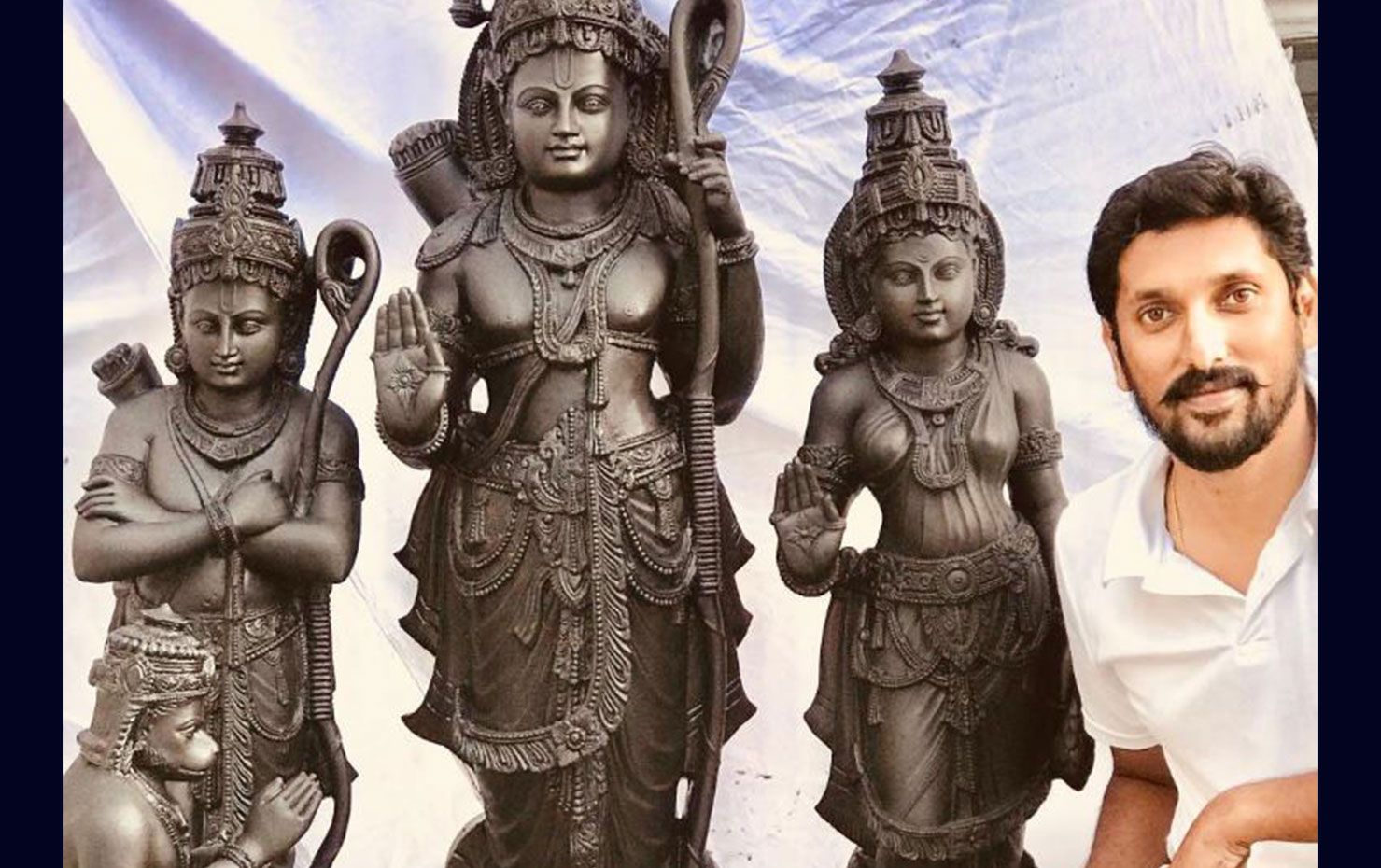
Nestled within the hallowed grounds of the majestic Ram Mandir in Ayodhya stands a breathtaking sculpture, the brainchild of the renowned artist, Arun Yogiraj. This exquisite piece, intricately carved from Makrana marble, isn't merely a visual spectacle; it's a profound astrological narrative etched in stone. Today, we embark on a journey to decipher the hidden meanings behind this masterpiece, focusing on its central theme: the Shabar Mantra.
The Shabar Mantra, also known as the Shatrughna Kavach, holds immense significance in Hindu mythology. It finds its origins in the Ramayana, where Shabari, a devoted tribal woman, offers Lord Rama berries imbued with this powerful mantra. Upon accepting the offering, Rama grants Shabari liberation, highlighting the transformative power of devotion and surrender.
Yogiraj's sculpture masterfully captures the essence of the Shabar Mantra. At its heart stands Lord Rama, depicted in all his divine grace, graciously accepting the offering of berries from Shabari, who kneels in reverence at his feet. The intricate details of their attire, expressions, and postures speak volumes about the underlying emotion and significance of the scene.
Beyond the surface beauty, the sculpture is a treasure trove of astrological symbolism. The number of berries offered by Shabari – twelve – corresponds to the twelve houses of the zodiac, signifying the mantra's ability to ward off negativity and protect from all directions. Rama's posture, with his right hand raised in benediction, mirrors the placement of Jupiter, the planet associated with fortune and protection.
The sculpture further incorporates subtle references to constellations. The arrangement of figures subtly echoes the constellation Ursa Major, also known as the Big Dipper, which in Vedic astrology is associated with guidance and overcoming obstacles. This reinforces the Shabar Mantra's role in navigating life's challenges and achieving self-realization.
Yogiraj's masterpiece transcends religious boundaries and delivers a universal message of devotion. The sculpture reminds us that true surrender and unwavering faith can unlock immense blessings and pave the way for liberation. Shabari's selfless offering and Rama's gracious acceptance embody the essence of spiritual connection and the transformative power of pure devotion.
Beyond its artistic merit, Yogiraj's sculpture at Ram Mandir serves as a potent tool for self-discovery. For those seeking deeper understanding, the intricate details offer a roadmap for introspection. By contemplating the symbology embedded within the sculpture, we can explore our own spiritual journeys and uncover the potential for transformation within ourselves.
The Shabar Mantra serves as a powerful reminder that every individual possesses the ability to overcome challenges and achieve liberation. If you're seeking guidance on your own spiritual path, consider consulting a learned astrologer through a Free Kundli or a Free Talk to Astrologer. These resources can provide valuable insights into your unique astrological makeup and equip you with the tools to navigate life's journey with greater awareness and purpose.
Conclusion:
Arun Yogiraj's sculpture at Ram Mandir is more than just a work of art; it's a testament to the transformative power of faith and devotion. By deciphering the astrological narratives woven into the sculpture, we gain a deeper understanding of the Shabar Mantra and its potential to guide us on our own paths to self-realization. Whether you're a devout Hindu seeking spiritual sustenance or simply an individual captivated by the beauty of ancient wisdom, Yogiraj's masterpiece offers a timeless message of hope, reminding us that within each of us lies the potential to overcome adversity and embrace the transformative power of the Shabar Mantra.
For more Interesting topics follow us on Instagram
Trending FAQs on Arun Yogiraj and the Ram Mandir
Q: How did astrology influence the design of the Ram Mandir?
A: Yogiraj meticulously aligned the temple's architecture with the celestial movements, incorporating the nine planets and five elements to create a harmonious and auspicious space.
Q: What is the significance of the Shabar Mantra in the temple's design?
A: The Shabar Mantra, symbolizing unconditional devotion, is subtly woven into the temple's carvings and murals, reminding us that true faith transcends social barriers.
Q: Can you get your free Kundli reading to understand your astrological influences?
A: Absolutely! Many online platforms offer free Kundli readings, providing you with insights into your planetary alignments and their impact on your life.
Q: How can I learn more about the stories depicted in the temple's murals?
A: Guided tours conducted by knowledgeable priests can unravel the intricate narratives embedded in the murals, enriching your understanding of the Ramayana and its timeless lessons.
Q: Can I connect with a skilled astrologer for personalized guidance?
A: Several platforms offer consultations with experienced astrologers who can interpret your Kundli and provide valuable insights into your unique astrological journey.
Author :